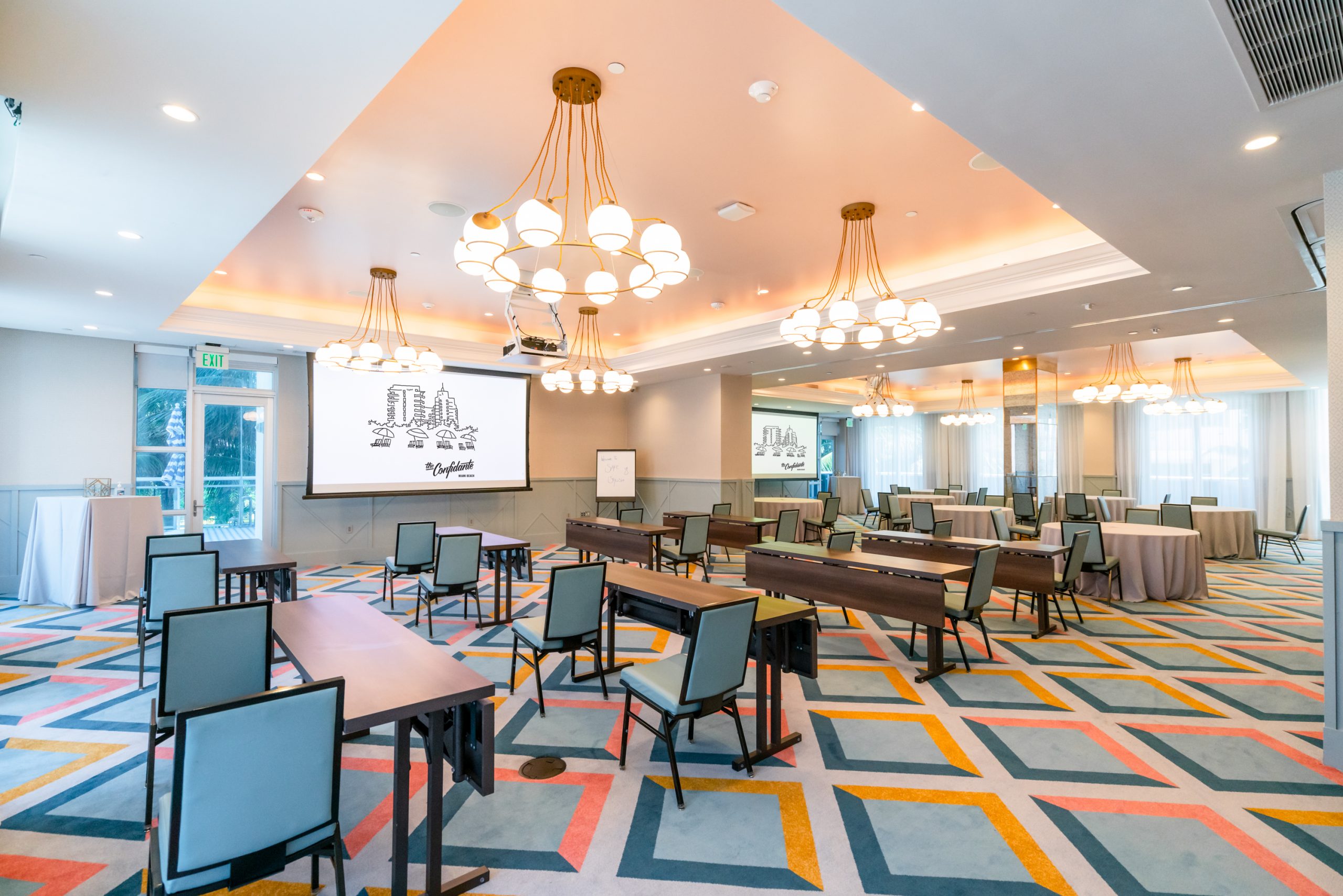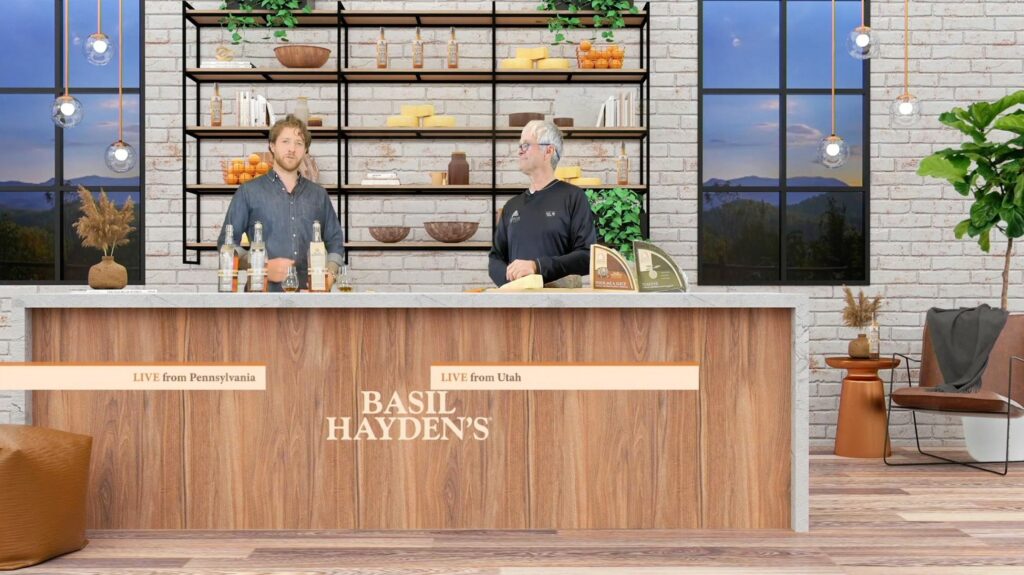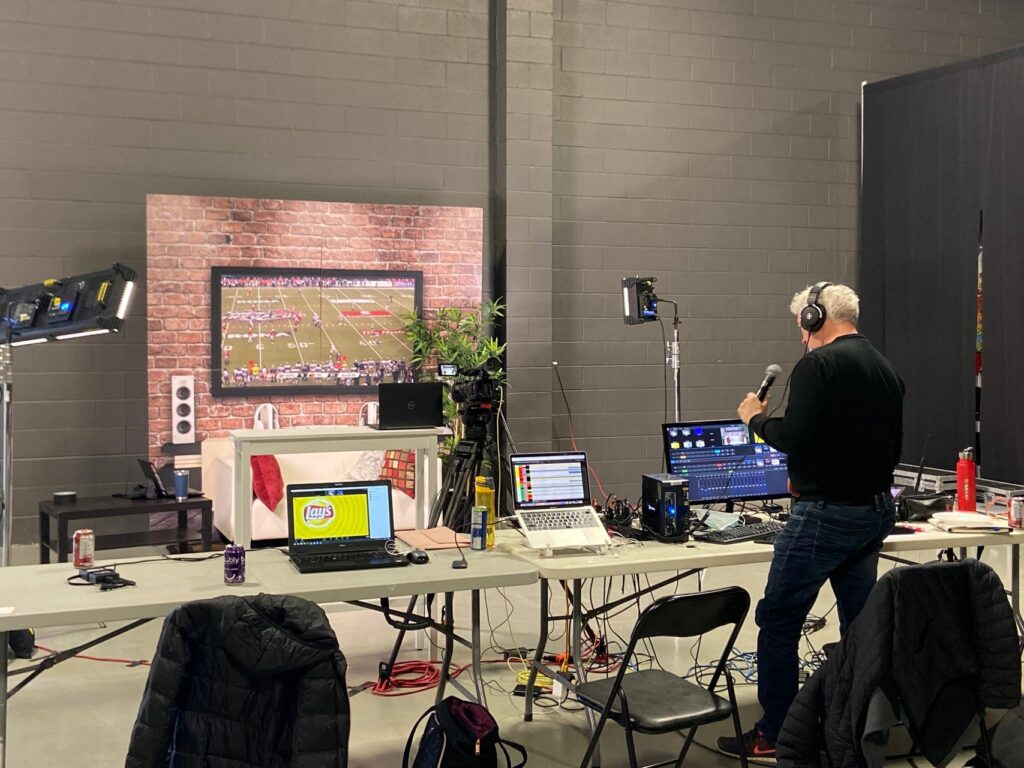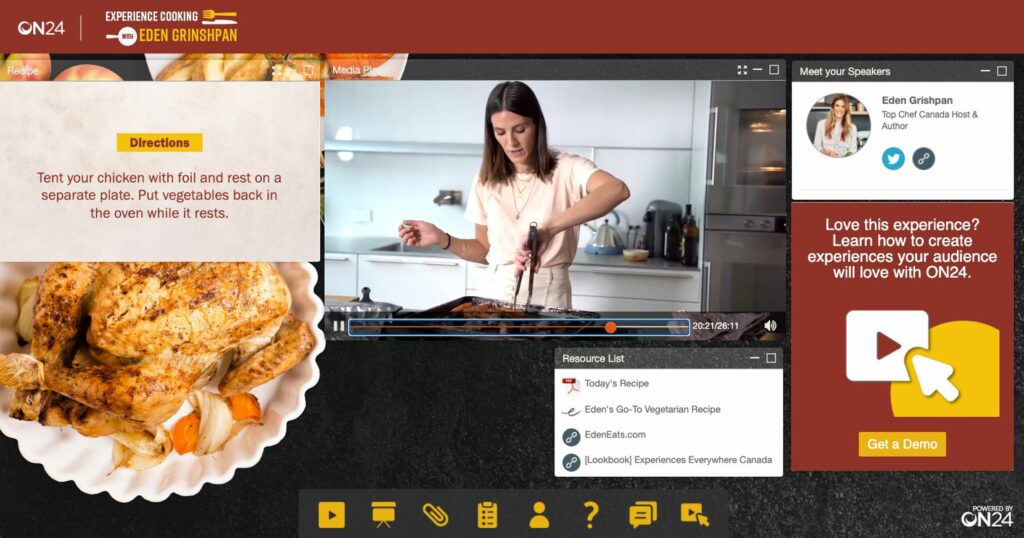
In the wake of ever-changing guidelines and variants, the term “hybrid event” is bounced around by industry professionals now more than ever. Back in those COVID-free days, no one blushed at a gathering of hundreds (or thousands) who got together for an annual meeting or product launch. Nowadays, it can be argued that many professionals not only anticipate hybrid events, but welcome the choice or flexibility one offers.
But what is a hybrid event? What do hybrid events look like? How is one planned? During a hybrid event, there is typically a combination of digital and in-person elements. But how is that achieved so each attendee feels engaged? Every hybrid event must be personalized to suit the event’s goals, which means there’s more to think about than simply setting up a live stream and calling it a day. And even with a hybrid event, adhering to an event planning checklist should always be step one.
It’s time to add another “new normal” to your professional life. Read on to know what it takes to put on a successful, enlightening, and creative hybrid event.

Hybrid events combine both in-person and virtual experiences, as opposed to just strictly one or the other. These events allow organizers to reach the greatest number of attendees by offering a low barrier of entry. That’s because participants won’t be required to travel, which they might not be able to do due to health concerns or budgetary and time restrictions. Also, a hybrid event allows you to host more folks even if the venue has limited capacity, so this strategy can cut costs (by using a smaller venue) as well as help reduce your carbon footprint. Plus, hybrid events provide event sponsors more bang for their buck since you’ll be able to offer both on-site and digital marketing opportunities.
Outlining the vision of your event is paramount from the get-go. The priority for you and your team should be landing on what you want the event experience to encompass for all attendees, whether in-person or virtual.
A seamless connection between your in-person and virtual audience is essential. You must bridge the gap between the two, beginning to end. This might include:
One organization that nailed this concept was TwitchCon, the global conference for the interactive, livestreaming giant of gaming, entertainment, sports, and music. For many years pre-pandemic, the company has hosted panel sessions, meet-and-greets, live entertainment, and music in a hybrid format for their annual conference. They are able to use their own platform to stream the content. This format allows virtual audiences to have seamless engagement, as well as social media interaction.

When looking through the hybrid event lens, there are two kinds of events in which to host: internal and external. But no matter the type, the objective for how to put together your event remains the same. Figuring out important elements like content (especially video), how to market, guest registration, platforms, and technology should all be top priority.
Internal hybrid events are the kind you plan to benefit your own company’s internal stakeholders. This is going to include leadership and employees. Depending on the size of your organization, as well as the geographic locations of employees, it might not be the simplest undertaking getting everyone together. But now in the day and age of well-planned hybrid events, every leader and employee should be able to gather in a format that works well for everyone. Sales kick-offs, annual meetings, team-building exercises, or workshops can all be planned utilizing hybrid techniques. For instance, if the event is held at the a company’s corporate headquarters, local employees can grab a seat while those positioned around the rest of the world can find their way in virtually.
External hybrid events can include conferences, trade shows, and product demonstrations. These events target prospects, clients, and customers. There’s a real opportunity to draw in more attendees in this manner (think Apple Special Events – product launches that have been occurring in the hybrid manner for years and years). Not only will your event garner a bigger audience, your organization will also lower their carbon footprint.
While it feels like the term “hybrid event” has been newly folded into our professional lexicon, the truth is they’ve been around for decades. Embracing the in-person/virtual format should not be as difficult as one might think. Have you ever watched a live awards show? Or cheered on a World Series Game 7? Then you’ve been a part of a hybrid event before. You were separate from the physical event, while others were present, but you all found out the content at the same time (probably all the while at a party, on social media, or taking polls online)!
If you place the concept of hybrid events in this context, it makes it easier to get your head around the hybrid model of a community event and shared experience.
The desire to meet and engage face-to-face will always be there. Hybrid events are certainly considered to be the new normal. Here are some reasons why they are here to stay:
Travel restrictions: Perhaps a company is located in an area that is hit hard by the pandemic and it is locally mandated that travel be restricted to that area.
Safety: Maybe there’s a certain vulnerable group within your employee population who don’t feel comfortable traveling just yet (or ever). Or perhaps health and safety regulations won't allow some guests to attend.
Schedules: Maybe a customer’s own schedule won’t allow them to be at your event in-person, but they can stream in for a presentation or product demonstration.
Sheer numbers: Attendee pipelines are grown when hybrid events exist, so creating options for guests will lead to higher numbers.
Last-second pivots: With ever-changing guidelines, companies should always have a contingency plan should an event need to be shifted into a hybrid affair.
Now that they are a part of our lives, it’s actually not too hard to narrow down why hybrid events make good, plain sense. Here’s why:
Typically, trade shows, conferences, and town halls make the most sense as a virtual/ on-site event, and many companies and brands such as Cisco have been offering a version of this concept at their annual gatherings for years. Of course, as we’ve all recently learned, not everything translates well into a virtual event. For example, product launches where attendees need to touch and feel the item can be a tricky experience to offer digitally.
Plus, folks will be craving face-to-face interaction even more now, so when it comes to planning consider how and if your event can do double duty. “It’s important to remember that physical events don’t translate one-for-one into a virtual experience,” says Amy Pooser, Global Chief Operating Officer and Chief People Officer at Convene in New York. “You want the experience to be equitable, but that doesn’t mean identical. ...We’re finding that many planners aren’t adjusting their in-person event to take into account the user experience on the virtual side. Hybrid needs to be all about the audience experience—whether that audience is in a meeting room or at their dining room table.”

Pooser says she takes cues from TV—a popular game show in particular—when planning a winning event. “I like thinking about hybrid events like we’re shooting an episode of The Price is Right. You have your live, studio audience and your much larger virtual audience.” With this in mind, there are several elements you’ll need to assess when it comes to going hybrid:
Timing: Are the sessions short enough to hold a virtual attendee’s attention? “With your at-home audience, you’re competing with whatever is in their living room,” Pooser says. “Keep your segments relatively short, so you don’t lose their attention. You’ll also want to give your at-home audience the benefit of ‘commercial breaks’—time to stand up, go to the bathroom, get a snack, or attend to whatever else may be distracting them.”
Also, remember to think about from where (and when) your audience will be tuning in. Not all of the attendees might be able to watch the keynote address as it’s delivered live, so consider posting recorded content or offering the same sessions at different times.
Programming: Does the programming engage both virtual and on-site attendees? Pooser warns against “copying and pasting” your in-person agenda for the virtual version. “Time and time again we see viewing numbers dip as the program goes on and on. To ensure that your audience watches and engages with the content you produce, be sure to give them natural breaks or even spread the programming out over multiple days. While eight-hour events were standard in the physical realm, sitting for eight hours at a desk, after having sat there for the past five months can become arduous and disinteresting leading your audience to tune out. No one wants to be at their desk for eight hours in a digital environment.”
Visuals: Do you need to tweak the staging to accommodate a live stream? And how do you choose the best platform to stream the event? “No one wants to stare at a static image of four talking heads. Even something as simple as switching between two camera angles, cutting between speakers, and panning to show the in-person crowd will go a long way toward making your content more visually appealing for the folks at home,” Pooser explains.

Engagement: “Make sure both of your audiences feel like they’re part of the same show,” Pooser says. “When you’re watching The Price is Right, everyone is very aware that there are two audiences, and [the host] does a great job of speaking to both. The host talks about the virtual audience, looks directly into the camera to engage with the virtual audience, and asks the live audience members to send messages to ‘the folks at home.’”
Also, will the virtual attendees participate in on-site discussions or will you offer a digital-only option? Pooser says that networking is a common client request, “as they want the in-person audience to be able to interact in an authentic way with the virtual audience.” To this end, Convene employs engagement features that work for both audiences including polling and Q&A capabilities that are embedded into the virtual platform and are also accessible via a smartphone. “We don’t want our virtual attendees to feel like they’re missing out because they can’t raise their hand to ask a question in person,” she explains.
Cost: Pooser says that the cost of a hybrid event doesn’t vary that much from an in-person meeting. In theory, if you’re hosting a smaller in-person crowd, you would be saving on F&B, but those funds are then reallocated to a streaming platform and other necessities. “If you really want a highly produced event that translates well digitally, cameras are key, and you could potentially need multiple roaming cameras to capture different stage angles and perspectives,” Pooser says.
And if your on-site event remains the same pre-COVID size, you’ll need to tack on extra for the virtual elements, but you might be able to make up the difference in virtual attendee revenue and sponsorship money. Also, keep in mind that you may want to offer the virtual experience at a lower price point, if you’re not able to provide the same comparable value to the on-site experience.
Because of the increase in demand for virtual and hybrid events, venues like Convene and The Confidante Miami Beach have amped up their meetings offerings. For example, Carolyn McCammon, Director of Commercial Service at The Confidante, says that during its recent meeting space enhancement project in 2019, The Confidante increased its bandwidth, offering high-speed wireless on a complimentary basis. The upgrade allows clients to stream from multiple meeting rooms without worrying about a spotty signal. The meeting spaces are also equipped with built-in screen and wireless projection for virtual sessions. Plus, the hotel boasts a “Meeting Owl” camera, a 360-degree, voice-activated conferencing camera that allows operators to feature any area of the room.
“The biggest requests our clients have are seamless streaming and enhanced bandwidth capabilities,” McCammon says. “Natural light is also important to clients as this helps with the quality of images being streamed. And of course the biggest request is that they have the technical support they need from our audiovisual team on their event day.”
To handle this new normal, Convene created a whole new position—Virtual Meeting Producers (VMP)—to offer some human support to meeting and event planners. The venue space also offers the tools to build a customizable event website, which is key for a hybrid event. (You’ll want to create separate registration paths for your in-person and virtual attendees so they can sign up for the right sessions.) Convene also provides an admin portal that allows planners to evaluate analytics in real time, so they can monitor how attendees are engaging with the event.
As planners continue to contend with the ever-changing health guidelines, hybrid events offer a way to extend the reach of an event to a potentially unlimited remote audience without sacrificing safety or the experience